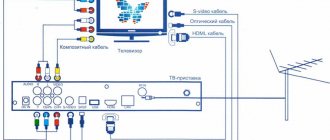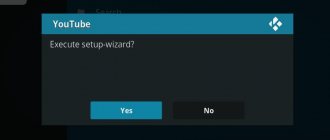Added September 20, 2021 at 1:58 pm
Save or share
The information industry continues to undergo a process of convergence. In simple terms, this means that broadcast network operators, such as cable television (CCTV), are increasingly providing data access services, and data network operators (DTNs) are providing television and radio broadcasting services.
Popular about OTT
The first generation of technology for providing television and radio broadcasting services in SPD was IPTV broadcasting. This format practically replicates the mode of operation of broadcast networks, when a large volume of programs from one source is broadcast to many subscribers. However, initially the SPDs were not designed to operate in this mode. Therefore, to effectively implement such functionality, multicast broadcasting modes and the IGMP family of protocols were developed. With IPTV broadcasting, the broadcast is carried out in streaming mode using the UDP protocol or its modified version RTP. These protocols do not guarantee reliable delivery of content, therefore the network in which such IPTV broadcasting takes place is subject to very stringent quality of service (QoS) requirements. Ensuring such requirements is a labor-intensive and expensive task, so IPTV broadcasting is usually implemented within one data transmission network and, most often, only by the operator of this network. As a result, it turned out that IPTV broadcasting practically duplicates the capabilities of SCTV operators in terms of audience coverage, range of services, additional functionality and subscriber devices used. And in terms of network cost, reliability and complexity of use, it even loses to SKTV operators. The advantages of IPTV are mainly expressed in the possibility of implementing the “video on demand” mode, but this service is not yet in widespread demand. The IPTV subscriber has no choice and is tied to the set of programs and network of the SPD operator. And the SPD operator has to organize the unusual and difficult work of selecting content and clearing the rights to broadcast it. Therefore, IPTV broadcasting was the first step, but not a breakthrough technology capable of attracting mass subscribers to SPD operators.
Benefits of OTT
Today the time has come for a new generation of IP broadcasting technology - OTT (over the top). What are its features and why is it given so much attention?
I'll start with consumer properties. This technology allows you to reliably deliver any video streams to subscribers’ stationary and mobile devices through any data transmission system, regardless of the operator (“over the operator’s head” - hence the name over the top). It is possible to view programs on a variety of different format screens - the so-called multiscreen mode. In most cases, the use of special attachments (STB) is not required. For a comfortable connection to services, it is enough to create a web page similar to that shown in Figure 1 using simple middleware at the head station.
Figure 1 – Example of a custom WEB page for connecting to OTT services
The user can go to this page and view programs using a standard browser. For more advanced navigation, the operator can create an application designed to be installed on a mobile device or Smart TV, and use it to navigate through programs. The technology works great on unstable and unreliable communication lines such as Wi-Fi. It allows the operator to receive complete viewing statistics: information about the TV program, viewing time, resolution, type of receiving device, etc., which is extremely important for monetizing services and organizing targeted advertising. The set of these capabilities allows us to talk about OTT as a revolutionary step in the development of IP broadcasting. The technology allows many independent OTT providers to competitively offer services to subscribers, regardless of their location in the networks of different data carriers. This removes territorial restrictions on content distribution. At the same time, different types of activities are separated: the STD operator is engaged in its main activity, and the OTT provider is engaged in its own.
All this allows us to say that OTT is no longer a functional copy of CATV systems, but an independent service that has its own unique capabilities.
How to set up OTTPlayer on Sony TVs
In order for OTT TV to work at a normal level, you need to make a number of settings. They are quite simple, so the average user will not have any difficulty understanding them, especially if the user has an LCD TV with Smart functionality.
So, setting the OTTPlayer parameters is done as follows:
- Open the window and see the “Resource” field. There you need to enter the name of the site that provides you with the OTT TV or IP-TV service;
- Next you need to click “Menu”. This button is located in the upper left corner;
- Find the registration section in the menu and click on it. The procedure is simple and follows a standard scenario, so we don’t think that any problems may arise with it;
- The further to-do list involves going to the item designated “Playlist”;
- Opposite the very first record and the FR2 server, you need to check the boxes and start the generation procedure;
- The setup will continue after a direct web link appears, which you need to copy to the clipboard and save in “Notes”;
- Go to the official website ottplayer.es and register there;
- Log in to the page using your personal account, click on the account icon and select “Playlists”;
- The player will start working after you register on another resource, so enter the details of the “provider” whose services you will use in the appropriate field.
Before you can run the application, the sheets need to be named. Once this is done, you can try running the application on your TV.
OTT system structure
So how are all these possibilities implemented, what limitations and new applications does the technology have, and how will participants in the process have to pay for all this?
Figure 2 shows the basic structure of an OTT system. How does it work?
Figure 2 – Typical structure of an OTT broadcast organization
Digital video streams, usually in MPEG TS format, are supplied to the input of the OTT broadcast headend. They enter the input of a multibitrate (MBR) transcoder, which forms several video streams from them - profiles, with different bitrates and resolutions. These profiles are adapted to different devices and different communication bandwidths. All these streams are synchronized by I-frames and have the same group of frames (GOP) structure. This is required so that a mobile subscriber, when moving through zones with different available bitrates, receives video service without jumps and breaks. From this structure it is clear that the maximum number of OTT services available for broadcasting is determined by the performance of the input MBR transcoder. For such purposes, WISI company suggests using transcoders of the WISI INCA 4410/4420/4430 series. Depending on the configuration and type of service (HD/SD), up to 18 HD programs with four profiles each or up to 36 SD programs with two profiles each can be processed in one 1 U chassis. If you need to broadcast more programs, you just need to add the required number of transcoder chassis.
Then the OTT server (origin server) comes into play. He provides individual interaction with each subscriber. The process looks something like this: the subscriber device requests from the OTT server a connection to the desired service and at the same time reports the parameters of the stream that the device can process and which allows for channel throughput. The OTT server gives a command to the packager which profile and what service needs to be transferred to the subscriber. The packer prepares a set of fragments (chunks) of the selected service several seconds long, places them in the transmission buffer, and the process of transmitting these fragments to the receiving device begins. The fragments are transmitted over the Internet using the TCP/IP protocol as standard data packets. All Internet networks are focused on transmitting such packets, so they reach the subscriber device in a standard way, where they are placed in the buffer of the receiving device. All packets are numbered, so they are arranged in the same order in the receiving buffer as in the transmitting one. Moreover, if any of the packets arrives damaged or is not received at the specified time, the receiving device will request its retransmission and the re-request process will be repeated until all fragments of the stream are received without error. This is standard TCP/IP protocol procedure. This ensures error-free stream transmission even in networks with distortions and losses. Next, in the receiving device, the received packets are again combined into a continuous stream, which is fed to the MPEG decoder and then to the display device.
While watching a TV program, the subscriber device continues to continuously exchange information with the OTT server and when the channel capacity or processor load changes, it may request to switch to another bitrate, lower or higher, which will be seamlessly performed by the OTT server. This is what requires alignment of profiles to I-frames.
The headend can be easily supplemented with a video on demand (VoD) server, catch up TV and other additional services.
This transmission method allows you to reliably transmit a video stream in networks where the current bitrate can even drop to zero at times, the main thing is that during buffering the average channel throughput does not fall below the average bitrate of the video stream.
The disadvantages of OTT transmission include the delay of the video signal during the buffering time, which can be up to several tens of seconds. For most services this is not significant, but I would not recommend placing bets on a betting site through an OTT service.
In addition, OTT is unicast broadcasting, the streams of which are summarized in the network. Therefore, the widespread introduction of this service leads to a significant increase in traffic in SPD. So, for example, only 100 subscribers watching the World Cup in HD format with 10 Mb/s will create an additional load on the network of 1000 Mb/s. For comparison, with multicast broadcasting, these same subscribers would create a load of only 10 Mb/s.
Other features of OTT transmission arise from the fact that OTT is a personal service. Since there is a continuous dialogue with each subscriber, the maximum number of simultaneously served subscribers is determined by the performance of the packager and OTT server. The WISI company offers the WISI INCA 5420 MPO device as a combined packager and OTT server. This 19" 1U device can support simultaneous connection of up to 1.8 thousand OTT subscribers. If you need to work with a large number of subscribers, devices can be cascaded.
What should IPTV operators and cable operators expect from OTT?
According to analysts, the development of the pay television market and its division according to methods of providing services currently has the form shown in Fig. 2.
Since OTT-TV technology allows the content producer to directly deliver it to the end consumer, without resorting to the services of a cable television operator as an intermediate link, operators’ fears that they may lose part of the market or even fall out of the content delivery business processes in the long term become understandable. Taking this into account, we can recommend that cable operators diversify their activities into OTT services and begin to provide this service themselves. This is confirmed by the desire of some major players in the Russian cable television and IPTV market, such as Rostelecom OJSC and VimpelCom OJSC (Beeline brand), to organize in the near future the provision of OTT services to their subscribers in addition to basic services. Also in favor of the development of OTT-TV is the fact that the largest OTT service providers, such as NetFlix and Hulu, have entered the Russian pay television market.
To summarize, we can say that the future of OTT-TV is no longer vague and this technology should be taken seriously as the next round in the evolution of pay television. The pace of further growth and development of this segment is limited only by the degree of coverage of the population with broadband Internet access and the current shortage of high-quality and interesting content for consumers in the required volume. Which, in turn, is only a matter of time.
Published: Broadcasting Magazine.
Television and radio broadcasting" #5, 2012 Visits:
18144
Articles on the topic
- Operators on amendments to the Law “On Advertising”
- Surround spectrum television systems and their features
- UltraHD at low start
- Little OTT secrets. The second secret of OTT is the elements that make up the solution infrastructure
- New archive for TV Telekompass Total articles: 2 [/td]
Author Author
[td]
Application examples
To solve some problems, the operator does not need to work with a large number of TV channels and serve a large number of subscribers. For example, in hotels, camp sites, holiday homes, corporate networks, etc. For such applications, WISI has released an all-in-one headend, which it calls the Multiscreen Launch Platform (MLP - initial platform for multi-screen broadcasting). This is a 19" 1U device, which is a complete OTT headend, including a transcoder for 12 HD or 24 SD programs (or a combination thereof), a packager and an OTT server capable of serving up to 500 subscribers simultaneously. The device also includes the necessary middleware, which allows subscribers to quickly connect to the desired channels. This middleware can easily be adapted for an individual operator. Using this platform allows operators to significantly simplify and speed up the launch of OTT broadcasting at such facilities.
But in addition to this “subscriber” application, OTT technology allows solving a number of professional tasks of the operator. Thus, it turned out to be applicable for professional delivery of broadcast channels from the shooting location to the central studio or teleport. Probably, many have had to watch how significant events are covered - sporting competitions, concerts, political events. Television companies deliver mobile television studios to the scene of the event and install temporary satellite communication stations to transmit the generated television programs to the central control room or teleport. However, the organization of such satellite links is very expensive. They have low noise immunity, and in some situations they are very difficult to organize.
Sometimes a local operator needs to deliver a local channel from the production site to the central teleport for inclusion in the global package. Satellite radio links are also often used here.
In all these cases, the task can be implemented much cheaper and more reliably on the basis of OTT technology. Signal delivery costs can be reduced tenfold. The structure of such a system is shown in Figure 3.
Figure 3 – Secure delivery of TV programs via the public Internet network
Here the transmitting part is practically no different from the subscriber part, only in the professional version the number of input programs and the number of subscribers will be only a few units. And additionally, for secure transmission of content over open networks, a scrambler can be included in the station. The WISI MLP station is suitable for solving this problem. For such tasks, the MLP line provides station options for 2, 4 and 6 input channels. Due to the small number of channels, this solution is not only compact, but also economical.
But the receiving part differs significantly from the subscriber part. In a professional OTT receiver, the restored transport stream is not sent to the display device, but is converted into an IPTV stream, which can be further processed or included in the digital package. For such tasks, WISI offers a semi-custom professional OTT receiver WISI FireFly HLS IRD. As a professional device, it is designed to operate 24/7, has web control, redundant power, allows you to edit the composition of the transport stream and output received signals in the form of IPTV, DVB, ASI or analog RF signals. Depending on customer requirements, it can receive from two to six OTT streams and have CAM slots for decoding scrambled signals. The system has been tested with CAS systems from various manufacturers. The specific configuration is formed according to customer requirements.
Based on such a solution, it is possible, for example, to build a corporate television system for companies with a central television studio and many offices both in the same building and in different parts of the country or even in different countries.
This is a good solution, for example, for organizing television in diplomatic missions abroad. Its structure is very simple and is shown in Figure 4.
Figure 4 – Organization of a corporate television system using OTT
The OTT station is controlled via a built-in web interface. Setup and configuration are carried out using the built-in powerful specialized VidiOS system with the capabilities of analysis, logging, recording and display of video streams. The platform can be supplemented by installing the AllSeeing Eye INCA 5420 group video monitoring unit.
To summarize the above, it can be argued that OTT technology provides operators and subscribers with fundamentally new opportunities and significantly changes the face of the entire telecommunications market.
Source:
- Telesatellite
Conclusion - comparison table
Everyone chooses a suitable IPTV provider for themselves, focusing on its position in the ranking, the provision of services and the cost of the package. If you don’t want to pay in vain, then choose stable and proven providers who are in the TOP of the list. However, like everything in this world, the situation regarding position in the ranking can change. Therefore, stay tuned for new products.
| Price | Channels | Archive | |
| OTTClub | from 310 to 700 rub/month | from 228 to 247 | 7 days |
| iLookTV (ex. Edem TV) | 65 rub/month | more than 400 | 4 days |
| Shara TV | from 310 to 450 rub/month | from 228 to 480 | 3 days |
| Cbilling TV | from 310 to 450 rub/month | 500 | 5 days |
| GREAT IPTV | from 200 to 300 rub/month | from 200 to 700 | — |
| Your TV | 715 rub/month | 250 | — |
https://youtu.be/r7VzQ6es5rQ
Interfaces
Ports – Ethernet 10/100, HDMI, 2xUSB 2.0, microSD, AV 3.5 mm.
The Bluetooth adapter version 4.1 easily found the Xiaomi soundbar and Meizu headphones. True, I could not connect to any of the devices. “We couldn’t connect” and that’s it... For the purity of the experiment, I brought AKGY 50 BT headphones from home, they found them, but they couldn’t connect. In general, the Bluetooth adapter of my set-top box apparently turned out to be faulty.
There is one indicator on the front panel - the status of the set-top box.
General impression
The cost of the device is two times cheaper than Movix Pro - 2500 versus 4500, which is relevant for our country. Only the Tricolor OTT set-top box is cheaper (1,999 rubles at the time of the test). Actually, despite the same hardware platform as Movix Pro, no similarities were found, literally at all.
The device does not heat up. I was pleased with the wide TV offer: except for PKVS and First TVCh, everything is there. I was pleased with the speed of channel switching, perhaps the best of everything I tested.
From VOD, I liked the presence of the library of the OTT service Premier with “House Arrest”, the second season of “An Ordinary Woman” and “Dyatlov Pass”.
But there are enough complaints. In addition to the above-described oddities and the non-working Bluetooth, I really lacked the ability to install applications and use at least YouTube. While the desire to keep a subscriber inside a closed ecosystem is understandable, I fear it may also lead to a desire to choose another, more open/friendly set-top box in relation to third-party applications.
It’s a small thing, but I’ll still write about the very small font of the interface, which is essential if the TV is located at a distance from the viewer (for example, in an office/study) or the diagonal is not large enough.
Possibilities
These are all the games we know from phones and tablets, but of course “angry birds” can be easily installed (personally, I’m already sick of it), I installed another cool “shooter”.
Control takes place through the mouse (by the way, I found it very quickly). There are even quite heavy games, I haven’t installed them myself, but a friend has the same console, and has a wireless mouse and keyboard, “cutting” for a good cause! So you won't be bored
Guts
The set-top box is built on the AmlogicS 905 X chipset. Beeline RASSE-001 and TVIPS-Box also run on it. This chipset has SoCARMCortex-A53 with Mali-450 MP3 GPU. [email protected] profile-2 hardware decoding Judging by the manual, the set-top box supports the H.265/HEVC codec up to 4K.
RAM in the set-top box is 1 GB, ROM is 8 GB.
The operating system seems to be Androidv.7.1, such a modified Android, frankly, beyond recognition.
Internal storage – 4.3 GB.
Unboxing
The box contains a power supply, an HDMI cable 1.5 m long, a remote control with batteries and the set-top box itself, a manual, and a warranty card.
When you turned it on for the first time, the set-top box prompted you to select a language, screen size, Internet connection (Ethernet or WiFi), time zone, date and time.
Not on purpose, but it turned out very cool that Movix Pro Voice set-top boxes from “Era” and “NTV-Plus 4K IPTV Vermax” came to us for testing one after another. And why? But because this is the same set-top box produced in Yekaterinburg - UHD300X. Movix has the prefix UHD300X2G, which means the amount of RAM. Therefore, we will often compare them with each other. Both, by the way, were produced in March 2021.
When unpacking, the first misunderstanding was discovered. The warranty card indicates a period of 1 year, and the manual for the console states 3 years. It's unclear what to believe. I checked with the operator and said it was a year.
The attachment has the same dimensions as MovixPro – 85x85x16 mm, and weighs only about 100 g.
External devices
I inserted a flash drive with multimedia content and pressed the “Multimedia” button on the main screen. The built-in file manager opened, I was able to play video files in AVI, MKV, MP4, 4K file in TS format.
Subtitles turned on and off. Audio tracks too.
I would like to note the scary and very complicated interface of the built-in video player. As if he is 20 years old, which is indirectly confirmed by the 3D button. I think it's MX Player, but I'm not 100% sure.
Somehow one MKV video file stopped playing after 37 seconds and jumped to the next one in that folder. The rest played fine.
For some reason the external hard drive was not counted. The second one too. The third one (Toshiba) worked. Video files from it played back fine.
I have not tested the micro SD slot.









